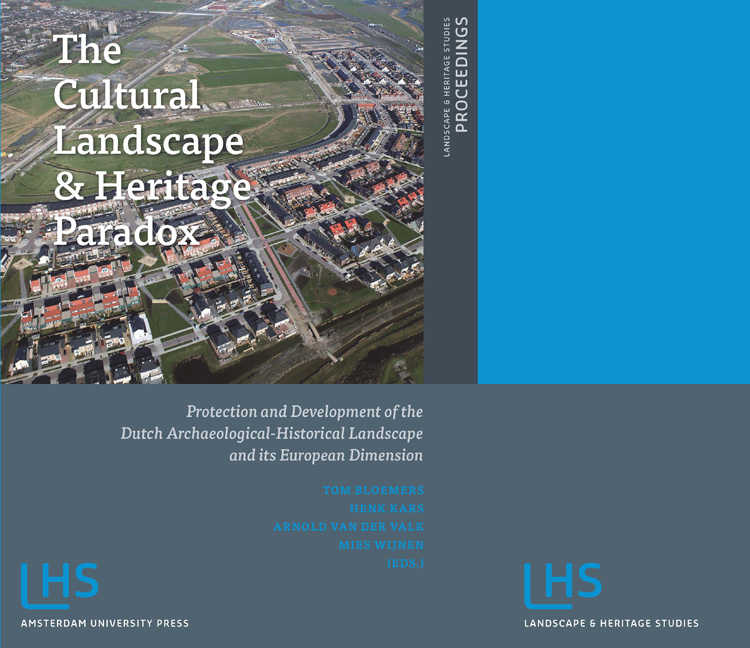 The Cultural Landscape and Heritage Paradox
The Cultural Landscape and Heritage Paradox Book contents
- Frontmatter
- Contents
- Preface
- I INTRODUCTION
- II INSIGHTS AND PROSPECTS OF ARCHAEOLOGICAL-HISTORICAL LANDSCAPE STUDIES
- III LINKING KNOWLEDGE AND ACTION
- IV IMAGINATION - FACTS AND CONSTRUCTIONS
- V SHARING KNOWLEDGE - STORIES, MAPS AND DESIGN
- VI SYNTHESIS AND CONCLUSIONS
- VII MANAGEMENT OF KNOWLEDGE
- VIII AGENDA FOR THE FUTURE
- IX SUMMARY
- X APPENDIX
- Subject Index
- Index of Places and Regions
1 - Agenda for the Future. What do we see and what do we take?
Published online by Cambridge University Press: 21 January 2021
- Frontmatter
- Contents
- Preface
- I INTRODUCTION
- II INSIGHTS AND PROSPECTS OF ARCHAEOLOGICAL-HISTORICAL LANDSCAPE STUDIES
- III LINKING KNOWLEDGE AND ACTION
- IV IMAGINATION - FACTS AND CONSTRUCTIONS
- V SHARING KNOWLEDGE - STORIES, MAPS AND DESIGN
- VI SYNTHESIS AND CONCLUSIONS
- VII MANAGEMENT OF KNOWLEDGE
- VIII AGENDA FOR THE FUTURE
- IX SUMMARY
- X APPENDIX
- Subject Index
- Index of Places and Regions
Summary
ABSTRACT
In the last section of this book I discuss the way forward in relation to the central theme. How and to what extent can we know past landscapes, how can we avoid considering only ‘what we see’ as known and how can we use this still hidden knowledge for the actual sustainable management of the landscape's cultural-historical values? This discussion has two basic dimensions that influence future developments in research and policy:
- managing the knowledge creation processes of the known, unknown and knowable past landscapes and
- integrating past, present and future perception of the historic visible and hidden environment in decision-making processes.
The answer is a change of thought and action towards integrative approaches and on European collaboration between research and policy, but closely linked with public participation and bottom-up actions. In the Netherlands the ideas and practices supporting the Belvedere motto ‘conservation through development’ are, after a decade, embedded in a network of researchers and practitioners in higher education, heritage institutions on national and regional levels and in private companies.
Regarding the focus on the (almost) invisible archaeological-historical landscapes, the PDL/BBO programme and related activities show a range of cases, methods and approaches as to how to explore and manage these landscapes. At the same time it is clear that in crucial parts of these landscapes, such as the historic urban areas, there remains much more to be achieved. A key issue is the development of partly existing methodologies and practices for the exploration and heritage management of urban areas. Another one is to intensify the collaboration with urban and landscape designers, in this way powerful alliances can be mobilized in order to make the hidden visible.
KEY WORDS
Future; integrative approaches; hidden (urban) landscapes; SWOT
AN AGENDA FOR THE FUTURE: WHAT DO WE SEE AND WHAT DO WE TAKE?
In many of the contributions in this volume on the archaeological-historical landscape and its heritage the authors have stated that the past has to be viewed from the present, with an eye on the future. Consequently, in the last section of this book we will consider the central theme of this volume and future directions.
- Type
- Chapter
- Information
- The Cultural Landscape and Heritage ParadoxProtection and Development of the Dutch Archaeological-Historical Landscape and its European Dimension, pp. 631 - 640Publisher: Amsterdam University PressPrint publication year: 2010


